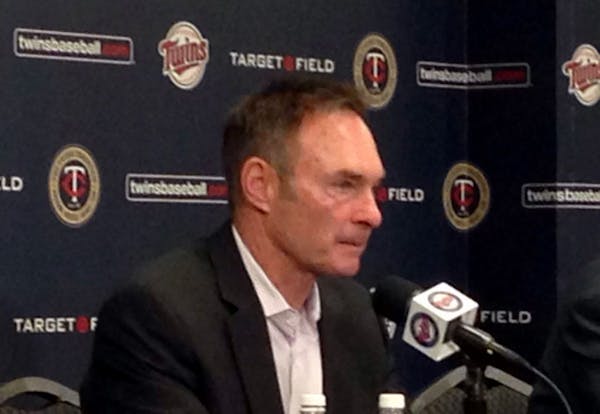Paul Molitor's baseball intelligence and situational awareness helped make him a Hall of Fame player. Now the Twins are counting on their new manager to pass that knowledge on to his players.
Baseball IQ sounds like a nebulous term, though. What does that even mean? Don't most people in major league baseball know a lot about baseball?
Three high-profile Twins players were asked for specific examples that illustrate Molitor's advanced baseball intelligence:
Joe Mauer
"I was in A-ball. He was roving around [the minor league system]. I remember I was hitting third. I was sitting at the top of the dugout just next to him.
"He watched the pitcher throw seven or eight warm-up tosses. By the second pitch of the game, he knew every pitch the guy was throwing. That kind of opened up my eyes. I was 18, 19 years old at the time. I was like, 'You know what, I'm going to be around this guy and try and learn as much information as I can.' "
Brian Dozier
One day Molitor asked Dozier about his routine before the start of a road series. Dozier told him that he studies video of opposing pitchers that series and takes batting and infield practice.
Molitor gave Dozier a new routine, one that he followed as a player. It started with him getting to the ballpark early to study the field because conditions change throughout a season.
"First things first, he would take out five or 10 balls and roll them down the third base line from home plate just to see which way the grass was leaning that day," Dozier said. "Just to kind of see which way it was sloping that day. If he had to put down a drag bunt, he knew if he had to be closer to the pitcher or hit it harder to third, how thick the grass was."
Then Molitor moved to first base. He'd take an imaginary 14-foot lead and study the cut of the grass.
"The cut on the grass at first base is different at every park," Dozier said. "He would get his lead and then visualize where that cut on the grass is right beneath his feet. So he would know the cut of the grass is at my right foot in a 14-foot lead. He would say, 'OK, this is where my lead is tonight.' "
Does the cut of grass matter that much?
"One bunt every week adds up," Dozier said. "That's 23 more hits. That can make you a .280 hitter. He tries to find ways around everything to get that edge. The list goes on and on. That's why he has one of the best IQs that I've ever been around."
Glen Perkins
At spring training a few years ago, Molitor took a group of pitchers to first base to discuss base running.
"I know if I'm on first base, something went horribly wrong," Perkins said. "It would have been easy to not pay attention because, 'Ah, this doesn't apply to me.' "
Instead, Perkins found himself enthralled by Molitor's lesson about how to study outfielders' positioning and whether they're righthanded or lefthanded because that could mean the difference in an extra base.
"You need to know if they're righthanded or lefthanded so if they're running to a gap to get a ball, that they're going to have to turn and throw," Perkins said, recalling Molitor's message. "You have to know who is hitting, know where those guys are playing [in the field].
"All these little things he was talking about with pitchers about taking an extra base. We're probably never going to get on base, let alone take an extra base. But hearing him coach, hearing him talk about things he saw and thought about when he played, it was amazing. It was very entertaining listening to him and his thought process on the field."

Wolves vs. Suns: Here are the match-ups . . . and a series prediction
Rockies' Kyle Freeland out up to 6 weeks with elbow injury. He says pitch clock may have been factor
Former Twins top draft pick Dave McCarty dead at 54
![Minnesota Twins pitcher Jhoan Duran (59) in the ninth inning Tuesday, August 15, 2023, Target Field in Minneapolis, Minn. ] CARLOS GONZALEZ • carlos](https://arc.stimg.co/startribunemedia/NWLT5CNXGTRZA6KVTMIPSOG3KI.jpg?h=91&w=145&fit=crop&bg=999&crop=faces)
Twins closer Duran could begin rehab assignment next week

